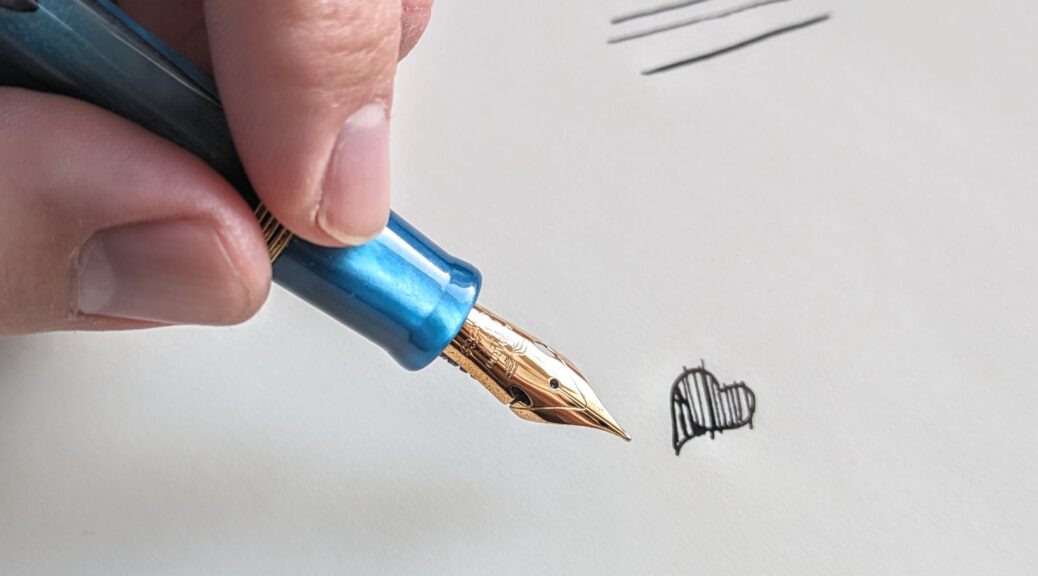
Nibby Sunday – The joy of writing by hand
So you have bought your first fountain pen? In this post, I share my tips for (re)discovering the joy of writing by hand. With your newly acquired fountain pen, the stage is set for you to find this joy.
Whereas in the past you may have primarily written by hand because you had to, and with a bad ballpoint pen or pencil, with a fountain pen you may find that you actually want to write. The pen itself inspires to put nib to paper. Why does the fountain pen have this effect?
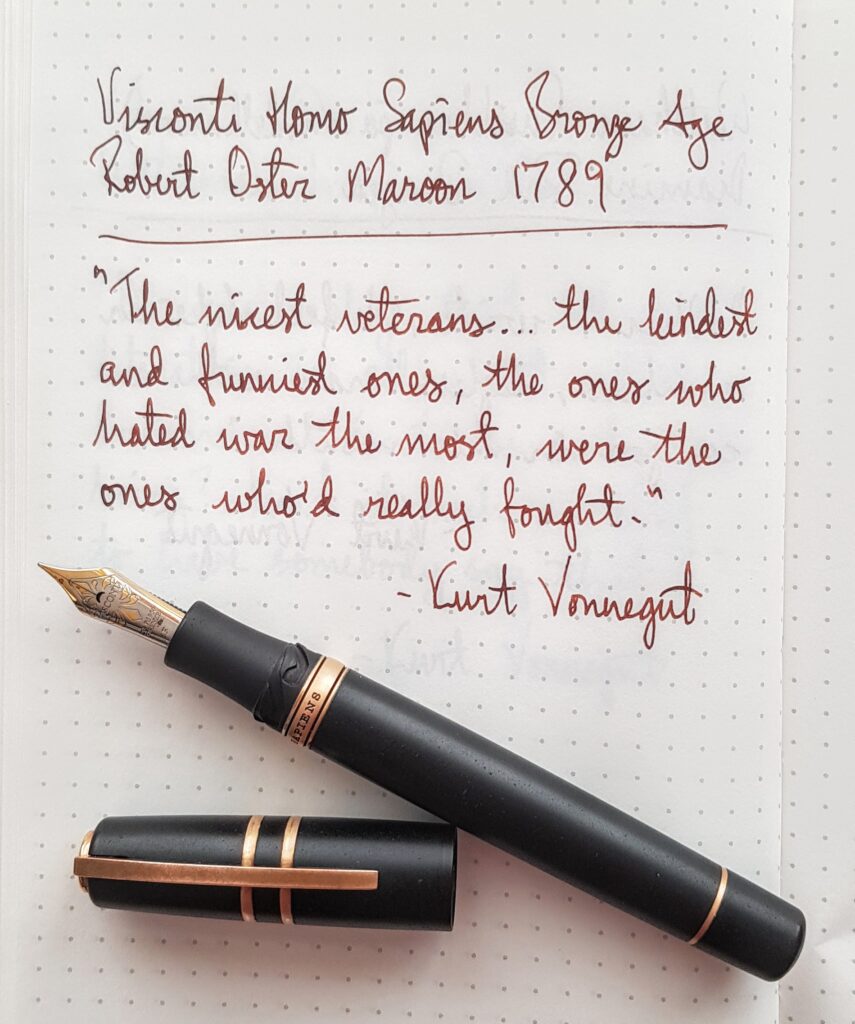
Well, maybe it’s about all the different ways you can make the pen your own. On most pen models, you can choose from a selection of different nibs, with different thicknesses and other properties. You can fill it with exactly the ink you want, and there are thousands of different ones on the market! One can also – with a little experimentation and research – make adjustments to the pen itself, to change the ink flow or how it writes and feels against the paper.
A fountain pen will also usually feel more exclusive and special. The materials it is made of are more proper than what you tend to find among the more ordinary writing implements, and there is usually more focus on design and elegance in a fountain pen.
Not least: a good fountain pen should write just under its own weight. You won’t find any other writing instrument that can write as effortlessly as a fountain pen. You can relax your hand and fingers while you write. This may be unfamiliar at first, and many new fountain pen users probably exert themselves a good deal more than they need to, but once you get used to it, you can write for hours without getting a cramp.
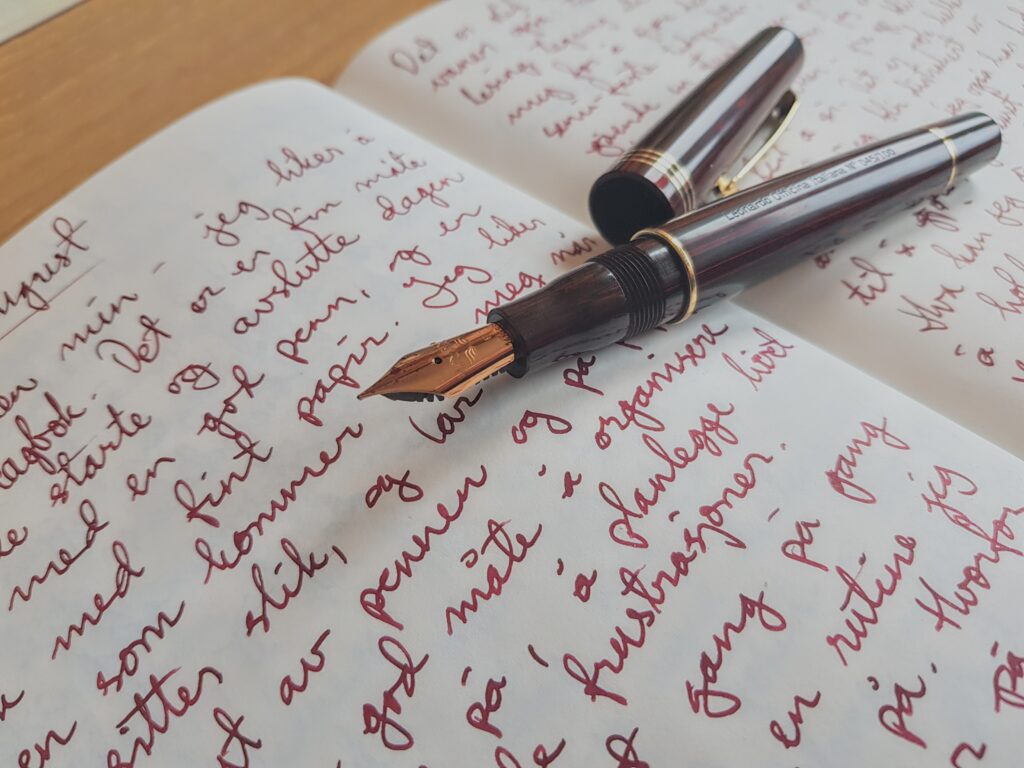
Feel how the pen glides across the paper, and how it feels in the hand. How you can write completely effortlessly with this pen, compared to most pens you’ve tried before. Feel how the pen’s materials feels against your skin. Feel the weight of the pen and how it is balanced. Experiment with how far up on the pen you hold it, to get the optimal weight balance, and where it fits best in your fingers. Maybe it is better with the cap posted at the back? Compare how the pen feels with or without the cap posted, and feel how the weight balance changes.
Try different inks in the pen, and see how the different inks flow slightly differently. Maybe some inks work better than others? Also try the pen on different types of paper. Disassemble the pen and clean it. Fill it with a new ink. Get to know it. Care for it.
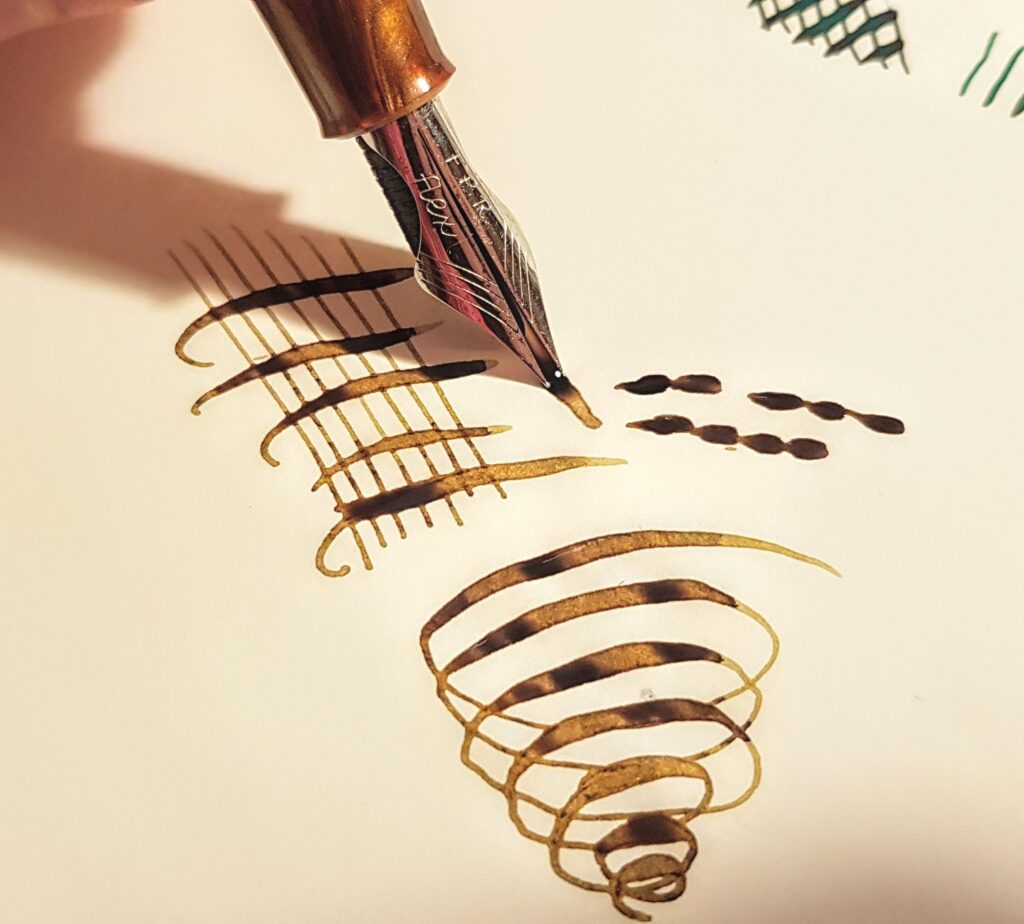
This is more than just a writing tool. The fountain pen is a companion. It can accompany you throughout your life if you take good care of it. It’s worth spending some time getting to know it, not least to make sure you’ve chosen the right pen. But also to know the pen’s strengths and weaknesses. Know which angle to the paper gives the best line, and the best glide when you write. Over time, the pen will develop its own personality, which only you know.
You won’t wear it out. When it runs out of ink, you can simply refill it. If something breaks on it, in most cases you can get it repaired. If you are not satisfied with how the nib writes, you can send it to a nibmeister and have it adjusted, or possibly just switch to a different nib.
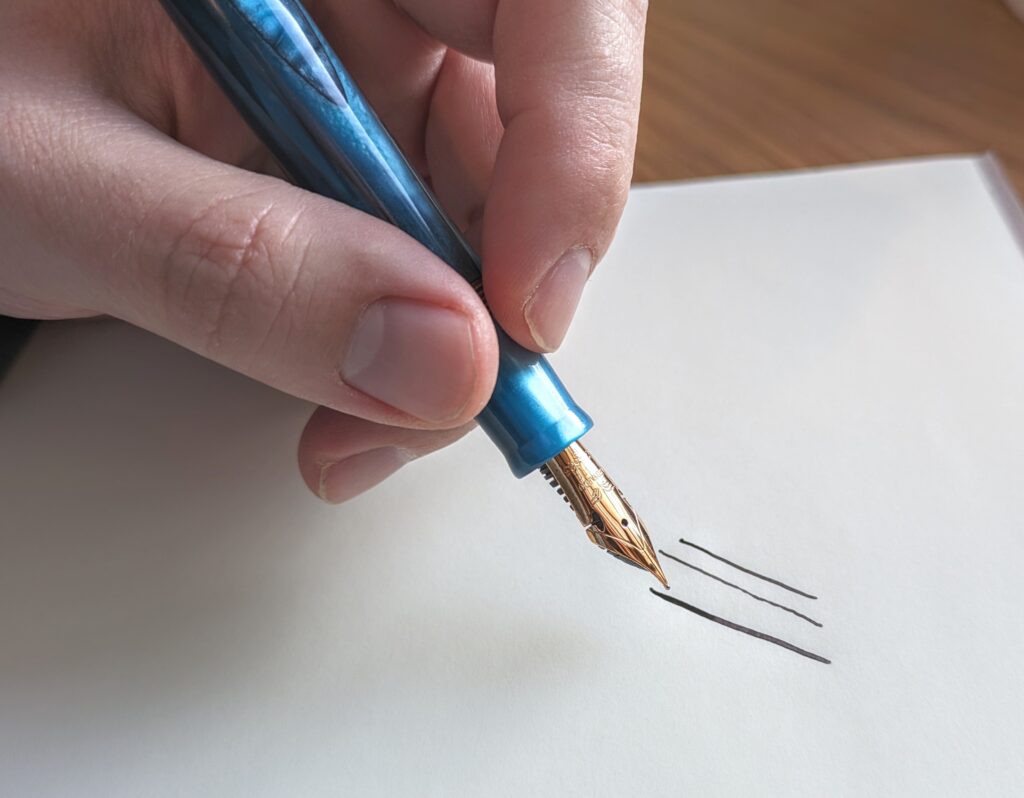
Enjoy the writing. Don’t think too much about the result. You can appreciate a good pen without being a calligrapher. Contrary to what many people think, being interested in fountain pens does not mean that you practice calligraphy.
Not sure what to write? Start with your name. It’s always nice to start with something you’re used to writing; words, phrases – or names – that you have written thousands of times before. Practiced movements.
Place the tip against the paper and draw a line. Then draw another line, but with a lighter pressure. Then a third line, but put a little more emphasis on the nib this time. Do you see any difference between the three lines? Write the letter “m”, with heavy, slow downstrokes and light, fast upstrokes. Write the same letter several times. Write the word “minimum”. See how the letters take on a different character when you find the rhythm of the heavy-light-heavy-light movement, as if the pen is dancing across the paper.
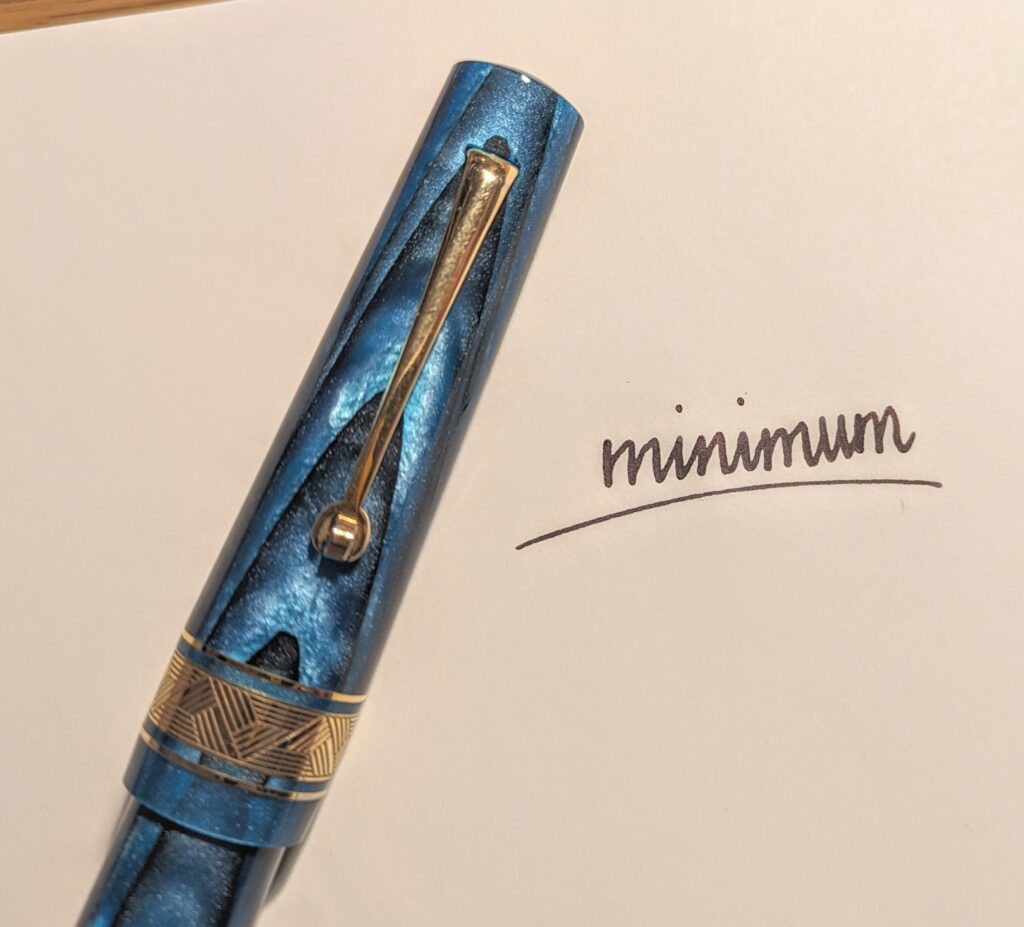
Next, find a quote you like, or a poem, a song lyric, a Bible verse. Take your time. Enjoy the actual writing. Note how it feels to write each word with this pen. Perhaps the tip of the pen feels a little different with certain movements? Search for the distinctive features in the nib.
Trying a new fountain pen is a bit like tasting whiskey. You try to take in all the details and nuances, enjoy it as a whole, but also sort out the various aspects of it. You take time to reflect on the aftertaste, before taking another sip. What I have described above is much the same, and with this approach you become something more than just someone who writes with a pen. You become a pen enthusiast.
Welcome to the club.